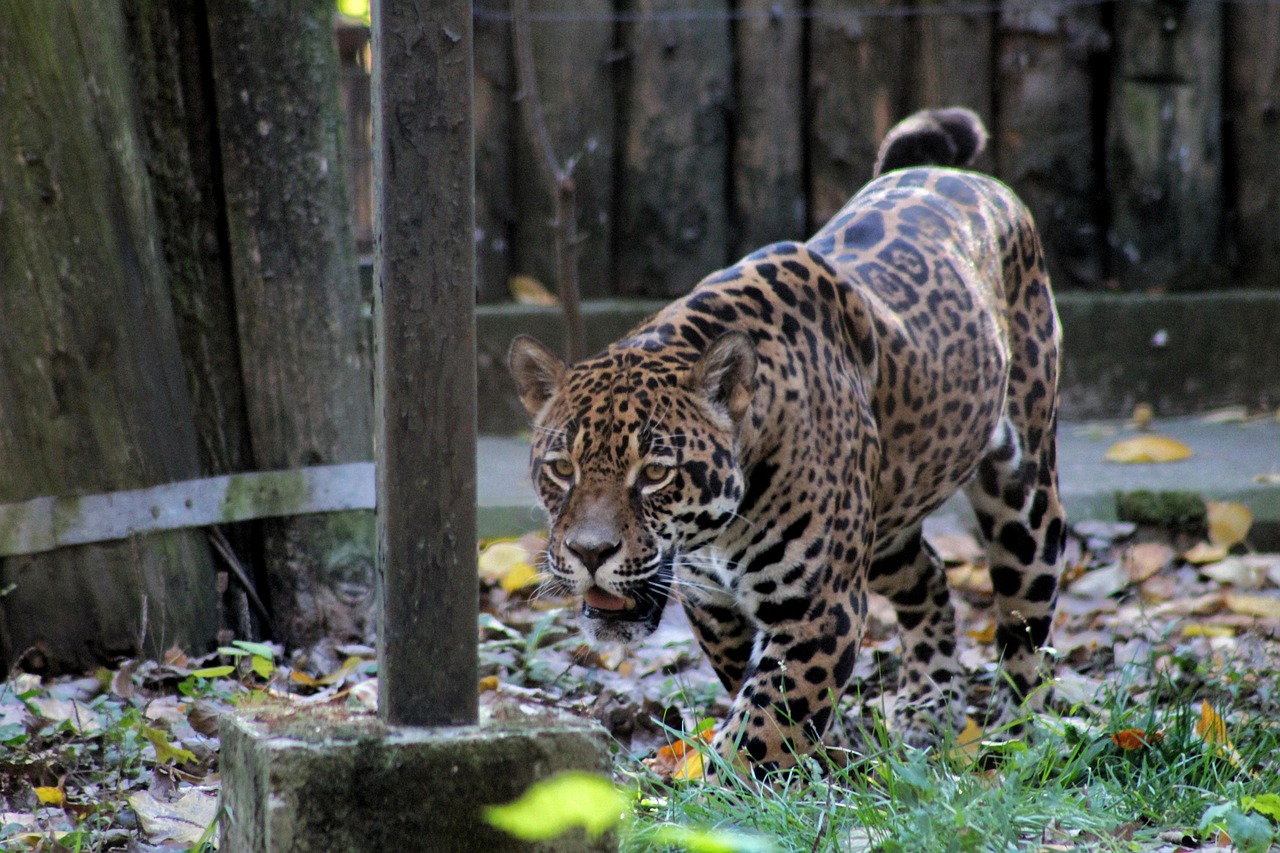The Diet Variation of Jaguars Across Their Range
Habitat and Geographic Distribution
Jaguars (Panthera onca), the largest big cats in the Americas, are predominantly found in diverse landscapes ranging from dense tropical rainforests to scrublands and semi-arid regions. Their predominantly inhabitable realms extend across Mexico, Central America, and parts of South America, notably in Brazil, Colombia, and Argentina. The variability in flora and fauna in these regions significantly influences the dietary choices available to jaguars.
Prey Diversity
Jaguars are opportunistic carnivores, often preying on a broad spectrum of animals. Their diet includes mammals, birds, reptiles, aquatic creatures, and even invertebrates, which vary based on local prey availability. Research suggests that over 85 species comprise the jaguar’s diet. Key prey includes capybaras (Hydrochoerus hydrochaeris), peccaries (Tayassu spp.), deer, and birds such as macaws. This adaptability in diet is crucial for their survival across harsh and fluctuating environments.
Diet in Rainforest Ecosystems
In the dense rainforests of the Amazon Basin, the jaguar’s dietary habits reflect the rich biodiversity of the area. They often target larger mammals such as capybaras and the collared peccary (Pecari tajacu), which are abundant in this habitat. Jaguars utilize their strength and powerful bite to tackle prey like deer, particularly the red brocket deer (Mazama americana), which are commonly found in these thick forest areas. Additionally, they are unique among big cats as they can successfully hunt caimans, thanks to their strong jaws and ability to carry prey into the water.
Diet in Dry Forests and Savannas
In regions characterized by dry forests and savannas, such as the Pantanal in Brazil, jaguars adapt their dietary habits according to the seasonal availability of prey. The Pantanal, recognized for its wetlands, offers a unique ecosystem for hunting. Here, jaguars often target capybaras, given their high population density, particularly during the rainy season when prey becomes more vulnerable. The fragmentary nature of the environment makes these large rodents accessible. Additionally, water buffaloes (Bubalus bubalis), introduced to this region, also become significant prey.
Coastal and Estuarine Diets
Along coastal areas, jaguars exhibit a remarkable flexibility in their diets. They often hunt for marine prey, such as fish and even turtles. In certain regions along the Pantanal and Amazon estuaries, jaguars have been observed preying on a variety of fish species, demonstrating their ability to exploit aquatic ecosystems. This behavior is not only a testament to their adaptability but is crucial for maintaining their nutritional needs.
Impact of Human Activity
Human encroachment and habitat destruction have led to reduced prey availability and increased competition for resources. As habitats become fragmented, jaguars may turn to domestic livestock for sustenance, leading to conflicts with humans. The depredation of livestock has resulted in retaliatory killings of jaguars, impacting their populations negatively.
Nutritional Requirements
To sustain their prowess as top predators, jaguars require a significant caloric intake derived from their diet. An adult jaguar typically consumes between 5 to 10 pounds of meat daily. The nutritional demands often shape their feeding patterns and prey choices, ensuring they maintain optimal health and energy levels needed for hunting and reproduction.
Behavioral Adaptations for Hunting
Jaguars are solitary hunters. Their hunting methods are highly customized according to available prey. They are known for their stealth and powerful ambush tactics, often stalking prey from dense coverage before launching a sudden attack. Their ability to climb trees enables them to survey their surroundings for prey while also enabling ambush from above when hunting arboreal species.
The Role of Prey Behavior
The prey’s behavior significantly impacts jaguar hunting strategies. For instance, species with high alertness, such as deer, require a more deliberate approach, as jaguars must stay hidden and time their attacks meticulously. Conversely, in areas where prey is plentiful yet easily spooked, jaguars might take advantage of herd dynamics, targeting the slowest or weakest individuals.
Dietary Specialization in Different Regions
In northwestern Argentina’s Chaco habitat, jaguars display a preference for smaller mammals, such as rodents and rabbits, while larger prey might be less accessible. Contrarily, in the lush southwestern Amazon, the species tends to dominate larger prey due to higher biodiversity. This regional dietary specialization allows jaguars to thrive in varying ecosystems, showcasing their adaptability.
Seasonal Dietary Changes
Seasonal fluctuations in prey availability also prompt jaguars to alter their diets. During dry seasons, prey may congregate around water sources, leading to increased hunting success for jaguars. In contrast, the wet season sees a broader array of prey but also higher competition from other predator species, influencing jaguar hunting strategies and patterns.
Research and Conservation Efforts
Ongoing research into the dietary habits of jaguars is crucial for effective conservation strategies. Understanding food chain dynamics and how jaguars interact with their ecosystem can inform habitat protection efforts. Collaboration with local communities is vital to mitigate human-animal conflicts and promote coexistence strategies that protect both jaguars and livestock.
The Importance of a Balanced Diet
Maintaining a balanced diet rich in varied prey is essential for the overall health of jaguar populations. Their role as apex predators makes them vital for ecological balance; a decline in their population can lead to overpopulation of prey species, which may damage vegetation and overall ecosystem health.
Conclusion of Dietary Study
The diet variation of jaguars across their range underscores their remarkable adaptability and resilience in the face of environmental changes and human threats. Each ecosystem’s unique characteristics shape their prey selection and hunting strategies. Understanding these nuances not only highlights the ecological significance of jaguars but also informs conservation strategies aimed at ensuring their continued survival in the wild.







